Almost everything you think you know about “Satanism” is wrong. If you think Satanism is a load of attention-seekers in flowing cloaks pretending to raise the dead while blaspheming against Christianity and generally being offensive… well, okay, you’re half-right. But it turns out that the word “Satanism” has evolved to describe a complex web of political and social ideologies, each of which has been shaped by the evolution of the internet.
Satanism as a movement is at something of a crossroads. It has always dealt with what supporters call fear and misunderstanding from outsiders—it’s called Satanism, after all—but the modern age of social media, memes, clickbait journalism and “hot take” blogging has created confusion and disagreement even within its own ranks. Two groups, the Church of Satan and the Satanic Temple, are clashing over what it means to be a Satanist.
An internal fight over “what is Satanism?” wouldn’t normally be interesting to the outside world, except that it’s part of a larger cultural pattern that we are all experiencing online. The American left is having a tug-of-war between classical liberals, who value diversity, and authoritarian censors who want to squash anything they deem offensive. Within the American right, the big business Washington insiders struggle against Tea Party libertines over what it means to be a “real conservative.”
Painful ideological schisms in previously homogenous movements are everywhere, and they are being fuelled at least in part by the “democratization of information” on the internet. The internet is a place where anyone can hang their shingle and push their own activism under any banner they wish. As a result, even well-established groups are struggling to maintain an identity and prevent it from being usurped by activists who seek to change or abuse labels. And what’s happened to those people who call themselves “Satanists” is a textbook case of how the internet splits political movements into authoritarians and libertarians.
Because the cultural fracture within Satanism has some analog with other areas of society and politics, you may even find yourself sympathizing with one side or the other. But to understand the schism, and how it relates to internet culture more broadly, you first have to get past all the pentagrams, velvet robes and goat heads, to understand what its adherents say it’s really all about.
Who are these strange people?
In 1969, Anton LaVey, the founder of the Church of Satan and father of modern Satanism, held a “Devil’s Mass.” It appears in the opening of a video documentary that you can watch on YouTube. Solemn organ music plays as men and women wearing dark robes file into the large ceremonial chamber under deep, blood-red lighting. A fully-naked woman lays on the altar, gazing wistfully into the distance. A figure stands behind a podium wearing a hooded skull mask. He looks a bit like Skeletor from Masters of the Universe, although of course this ceremony predates that Mattel franchise by more than a decade.
LaVey, wearing a cape and devil horns, rings a bell and intones in the deep and resonant voice of a carnival magician: “Open wide the gates of Hell and come forth by these names… Astaroth, Moloch, Asmodeus, Beelzebub, Mephistopheles!” The ceremony lasts a little over five minutes, with intonations of various passages from a book and the passing around of a metal chalice to drink from. At the end, LaVey visibly relaxes, and speaking in normal conversational tones, he mutters: “Well… that’s it for that part.” The participants appreciate the joke.
Satanism attracts freaks and weirdos—and I say that with all due love and respect, since I, dear reader, consider myself a Satanist—but they are not “devil-worshippers.” They never sacrifice animals, nor do they abuse children or involve them in any way. The cloaks and masks and pentagram tattoos are pure attention-grabbing theater, and always have been from day one.
This is what the media so often misunderstands, because it takes the trolling—or melodramatic attention-seeking, if you prefer—of the Satanist movement at face value.
Here’s what they believe. LaVey’s Satanism denies the existence of both God and Devil, rejecting all belief in the supernatural. LaVey railed against occultism, but did talk about “magic” as a psychological phenomenon: “Lesser Magic” was his term for the manipulation of people through charm and guile, while “Greater Magic” refers to rituals and ceremony that can serve as an emotional release. The “Devil’s Mass” was an example of Greater Magic: a ceremonial activity that is both physical and mental—like yoga, but even sillier, and with evil-looking props.
Later in the documentary about “Devil’s Mass,” LaVey explains the choice of imagery: “Satan is simply a word that means the adversary, or the opposition, or the accuser. It doesn’t necessarily mean evil or brutality, or cruelty. It simply means the dissenter.”
This symbolism is meant to scare people who scare easily, a bit like some of the offputting language and memes of 4chan or reddit. It’s a sort of induction test. Satanists are, in their own way, supreme elitists: if you can’t get past the pentagrams and silly robes to see that they are an atheistic religion rooted in science and rational self-interest, then they consider that to be your failing, not theirs. The symbols keep away those whom the Satanists would consider too weak-willed or superstitious to embrace a religion that has no god.
An alternative to ‘left’ and ‘right’
From the outset, LaVey created Satanism as a philosophy that would not fit neatly into any prepackaged political agenda. Jesper Aagaard Peterson, the primary scholar in the world today about Satanism and author of Contemporary Religious Satanism: A Critical Anthology (2009), wrote that Satanism is neither a “conservative” nor “liberal” philosophy per se, but instead searches for “the third way” as an alternative to the traditional left-right dichotomy in politics.
Drawing upon literature such as Might Is Right by Ragnar Redbeard (the names don’t get any less peculiar, so get used it) and the philosophy of Ayn Rand, LaVey believed that the most rational, scientific approach to morality is one that promotes freedom and the pursuit of one’s own desires while acknowledging that we live in a tough and unequal world. People have the moral right to pursue their own passions in a controlled and responsible way, as long as it does not interfere with that same right for others.
He believed in meritocracy: “equality” means equal opportunity, but science and evolution tell us that some people are simply less capable than others. A rational Satanist does not apologize for that fact of the world, but rather embraces it. In this regard, Satanism has a lot in common with the modern “alt-right” movement on the internet, and with much of the philosophy emerging from Randian, men’s rights and libertarian communities.
To help introduce people to the philosophy of Satanism, LaVey drew up The Nine Satanic Statements as a summary of what the symbol of “Satan” represents to a Satanist, and The Eleven Satanic Rules as a guide of conduct for people adhering to Satanic philosophy. They are cast in the same theatrical language as the rest of his work.
The Nine Satanic Statements
The Eleven Satanic Rules
Through the lens of today’s politics, his philosophy appears most closely aligned with what might be called “atheistic libertarianism,” with a dash of ritual magic thrown in for fun. This type of rugged individualism seems to place Satanism on the conservative end of the spectrum, especially resonating with “cultural libertarians,” a movement first identified and named by Breitbart‘s own Allum Bokhari, who reject political correctness and social-justice agendas.
In the social media sphere, the emerging “alternative right” or alt-right movement openly embraces the same type of evolutionary philosophy that LaVey borrowed from Ragnar Redbeard. “As a society, we have been searching in vain for about two centuries for evidence that all people are equal and have found none whatsoever,” one alt-right website says. “The alt-right is the right wing stripped of any superstitious belief in human equality.”
So, if you consider yourself part of the alt-right, and are also an atheist who enjoys a little sexual deviancy now and again, you may already be a Satanist.
High Priest Peter H. Gilmore, the head of the Church of Satan, says: “Our self-deification allows us to be beneficent towards others by choice. Satanists assist others because it pleases them to do so, not because it is a sacrifice demanded by society.”
In preparation for this story, I spoke with members of the Church who spanned the entire political spectrum, but all talked about the importance of individualism. Victoria Lustig, not her real name, a member of the Church of Satan and life-long Satanist, considers herself to be a conservative, explaining that she dislikes the “over-encroaching and impossibly expensive nanny state of political correctness.”
Reverend Bones, also a pseudonym, is a member of the Church who considers himself a liberal, and has even created and sits on the boards of environmentalist and animal-rights groups, but he also emphasized his opposition to the authoritarian tendencies of some parts of the left wing: “Satanism doesn’t encourage pushing your political views onto others who aren’t interested in them.”
It would be a mistake, however, to put Satanic philosophy in the same bucket with Rand Paul and other “libertarian” heroes of the right or with other traditional conservatives. Gilmore stressed to me that LaVey welcomed LGBTQ+ Satanists from the very start of the religion in 1966, years before the Stonewall riots and the birth of the modern gay rights movement.
The 1974 biography of Anton LaVey, The Devil’s Avenger, includes a photograph of LaVey surrounded by women at one of his “Witches’ Workshops,” one of whom is transgender. The caption points out that the “Church of Satan welcomes rather than condemns such deviators from socially accepted sexual roles.” A member of the Priesthood of the Church of Satan has even legally joined a same-sex couple in marriage.
Satanists appreciate sexual deviancy. Of course they do! They even refer to Satanism as a “carnal religion.” But they do not embrace sexual deviancy because it is “evil,” or even as a matter of mere rebellion from mainstream Christianity. For a Satanist, exploring whatever kinks you might have—and for some Satanists these are some serious kinks—is just a part of your right, as the supreme ruler of your own life, to explore your own lusts and desires in a controlled way.
This doesn’t mean, however, that Satanists support unhinged debauchery. LaVey was also against the “turn on, tune in, drop out” hippie culture of the 1960s. The Satanic Bible encourages “indulgence instead of abstinence,” but not to the point of self-destruction. Satanists know the importance of having a “safe word.”
Ultimately, the Church of Satan is not a political organization, and Satanism doesn’t advocate any particular type of politics or activism. The religion allows complete autonomy of its adherents to be any political orientation—or none—as they choose. Some are liberal activists and some are conservative activists; but none is an activist “in the name of Satanism.” They consider their politics to be purely their own, as it would be against the principles of Satanism to impose them on others.
In a previously published interview with Gilmore, he explains why the idea of “Satanic political activism” was so distasteful to members of the Church: “It is important to note that Satanism is not a cause, rather it is a set of principles that serve as a tool for each Satanist to get the most out of life. So activism in the name of Satanism is meaningless.”
You will see, below, that this is one of the main reasons that the Church of Satan finds the Satanic Temple so distasteful. But before getting to the Satanic Temple’s media-blitz style, crowdfunding campaigns and political activism, we should look at how the Church of Satan effectively used the internet in the 1990s to fight back against what they thought of as a lazy and unprofessional mainstream media.
How the early internet saved Satanism
The book Michelle Remembers was published in 1980 as a biographical account of abuse that Michelle Smith claimed she experienced at the hands of a Satanic cult. It was co-written by her and her psychiatrist, based on memories that Michelle had “recalled” under the influence of “regression hypnosis,” a form of recovered-memory therapy that has been widely discredited as something that can lead to the creation of “false memories.” The use of recovered-memory therapy has led to false accusations of sexual abuse and the conviction of innocent people based on the supposed “recovered memories” of people who were never abused.
But Michelle Remembers was a big hit. Smith claimed she had been locked in cages with live snakes, watching her mother’s cult slaughter kittens in front of her. She even claimed to have been abused continually for 81 days by cultists trying to summon Satan. It was covered by tabloids and television, and in 1989 she appeared in Oprah Winfrey’s television show where her story was presented as unquestioned fact.
Throughout the 1980s and early 1990s people came forward with similar stories. According to an in-depth article published last month, accusations of pedophilia and child abuse skyrocketed, and law enforcement agencies across the country held seminars. “In the vast majority of reported cases of Satanic ritual abuse, it was the testimony of the allegedly abused children themselves that damned dozens of innocent people to lengthy prison sentences and a lifetime of social exile. However, subsequent review of these cases revealed that much of this testimony was obtained through coercion and suggestive interviewing techniques by overzealous social workers, and that these statements were rarely questioned by investigating officers.” There was never any hard evidence that any of it really happened.
But the mainstream media loves a titillating story, and once they create a narrative they become desperate not to let it go. Moreover, because of the invocation of the name “Satan,” the Church of Satan found itself under scrutiny as the presumed perpetrators of these terrible crimes. LaVey and Gilmore submitted to print interviews and made television and radio appearances as often as they were able, in an attempt to educate people about what the Church of Satan really stood for, and to dispel the myths and panic surrounding supposed “Satanic cults.”
Over and over they would repeat the same message: The Church of Satan is not related to “devil worshippers,” does not condone abuse of any kind, and has no control over what any crazed individual weirdos might do under the label of “Satan”. Satanists affiliated with the Church may well be weirdos: but they are the good kind of Satanic weirdo. They are not violent or abusive, and they certainly don’t worship any form of “devil.”
During those early days, most Satanists weren’t able to speak out to the world in a meaningful way. Unless they had access to the limited mainstream outlets of television and radio, they had no chance of expressing themselves or countering the accusations being leveled against “Satanists” on a regular basis.
Then, along came the internet revolution in the mid 1990s. Suddenly, there was a way for the Church of Satan to reach out to people and educate directly, without having their message filtered and funneled through those few select television and radio stations that would have them. The internet was small compared to now, but for the first time it provided a way for the Church of Satan to directly spread its side of the story, and point out the laziness and lack of professionalism, as they saw it, in the media.
By the late 1990s, the period of moral hysteria that has become known as the “Satanic Panic” had lost steam. Can we credit this entirely to the internet revolution? Probably not. Some mainstream outlets published research debunking the accusations of cult activity. Sociologist Jeffrey Victor published Satanic Panic: The Creation of a Contemporary Legend in 1993, calling out the lack of evidence and fact-checking in Satanic cult investigations. But the Church of Satan was almost certainly one of the first underground groups to use the internet to fight back against a sloppy and ideologically-driven popular press.
Satanism today
If you follow American politics, you may have come to the conclusion that Satanists are merely left-wing pranksters. That image has been fostered by one particular Satanist group, The Satanic Temple, headquartered in New York City, which has used the mainstream press, online fundraising and social media to throw itself into the media spotlight since its founding in 2012.
It put a “fallen angel” holiday display at the Florida capitol to protest the Nativity scene there. It built a gigantic statue of Baphomet (a goat-headed pagan idol) that it hoped to place next to the Ten Commandments monument on the lawn of the Oklahoma Supreme Court, although that proposal has since been withdrawn. The group has even filed a lawsuit against the state of Missouri, claiming that the “informed consent” literature and waiting period required for abortions violate their deeply-held Satanic beliefs.

Satanic Temple Satanists show up at high school football game to protest pregame prayer
The Church of Satan thinks this behavior is disgusting, deplorable, and distinctly un-Satanic. Many of its members feel that the Temple is misrepresenting the religion and adopting the label of “Satanist” for shallow reasons or political gain.
Victoria Lustig could not hide her utter distain when I asked her about the left-wing antics of the Temple. “They plagiarize our published doctrine, call themselves ‘Satanists,’ and spout our philosophies when they see fit, but then shoehorn in their own collectivist, social justice flavored ideas. I can’t overstress how not affiliated we are with those guys.”
Lucien Greaves was one of the co-founders of the Satanic Temple in 2012 and is currently their most visible spokesperson. His real name is Doug Mesner, but he uses the pseudonym for matters related to the Satanic Temple. I asked him to explain his original motivation for creating the Satanic Temple and distinguishing it as a separate kind of Satanism from that taught by the Church of Satan.
“When LaVey penned the Satanic Bible, he drew heavily from a book written in 1896 called Might Is Right, which is a very harsh social Darwinist tome,” Greaves explained. “Might Is Right is a racist book and an anti-Semitic book. LaVey renounced the racialism and anti-Semitism, but he felt that people should be stratified, that we should work toward a meritocracy where the more intelligent, talented and productive people are best able to rise above. On that pretext, he really renounced the idea of equality. People are born with distinct talents.”
Greaves said that earlier in his life, that type of mindset made sense to him, and he gravitated toward LaVeyan Satanism because it seemed to be the brutal reality of the world. As he got older, however, his mindset began to change. Or, as he put it: “I grew up.”
“I thought about the nature of altruism, and the fact that there are many things I’m willing to stand up for even at a great expense to myself, and even if there is no direct benefit to me.” Greaves said that it was this type of thinking that really informed what he called the Satanic Reformation that lead to the creation of the Satanic Temple.
“Then my formal education kicked in, and I started learning more about evolutionary biology and social biology, reciprocal altruism and game theory, and different explanations for altruism.” Recent research in evolutionary theory and neuroimaging has produced a great deal of research suggesting that human beings have built-in biological instincts toward things like strong reciprocity, community, and the social good. Much of this research is described in detail in Stephen Pinker’s book The Better Angels of our Nature, published in 2011.
“To LaVey’s credit,” Greaves noted, “he did feel he was adhering to facts of science regarding evolutionary reality, not that he was taking assumptions on faith.” Greaves points out that LaVey’s harsh and competitive interpretation of evolution was the best accepted science of the time. But in the last several decades, scientific research on evolution has moved on.
For Greaves, this led to the conclusion that Satanism is consistent with the modern, internet-fuelled social justice movement. “It’s one thing to talk about meritocracy and say ‘these people have more talent and have proven themselves to be better in the positions they are in,’ but if you don’t have an environment of equality then you can’t have a true meritocracy either. You have to treat everyone the same in a legal sense, or you won’t have justice. That is the very meaning of justice.”
For many members of the Church of Satan, this argument sounds not only ridiculous but dishonest. Gilmore firmly believes that the motivations of the Temple are political rather than philosophical at their root. “They treat our 50 years of explaining our philosophy as a given context that is up for grabs,” says Gilmore. Gilmore and other members of the Church do not see the Satanic Temple as either a “reformation” of Satanism or as a schism: they do not acknowledge members of the Temple as authentic Satanists at all. “An actual schism would have philosophical distinction as its primary mission,” Gilmore explains.
The Temple, from its own point of view at least, does have its own interpretation of the Satanic philosophy laid out by LaVey. It replaces the Nine Statements and Eleven Rules with The Seven Tenets of Satanism, which focus on this new interpretation of the science of evolution and the human condition, with the explicit goal of social justice.
It also de-emphasizes some of the more mystical-sounding language about “magic,” striving instead to position itself very clearly as an atheistic religion rooted in rationality, with no connections or allusions to the supernatural. Instead, its focus is on compassion, justice, promoting secular thought, and deconstructing society’s assumptions about what religion and “deeply held beliefs” are.
In this case, “deconstructing” involves suing cities for the ability to put up their giant goat-headed statue, and pouring milk on women to protest pro-life demonstrators.
This “new approach to Satanism” resonated quite widely with people who were familiar with LaVey’s writings and drawn to the imagery and the scientific secular approach to religion, but for whom the cutthroat “might is right” social Darwinism and talk of magic and ritual either fell flat or was outright distasteful. In other words: the new approach appealed to liberals.
Damien Ba’al – yes, you’re right, not his real name – an active member of the Temple, said that he has been familiar with LaVeyan Satanism and the Church since the 1990s. “Until 2014 I really wasn’t impressed with Satanism at all,” Ba’al admitted. He explained that despite being even more of a libertarian in his youth than he is now, he didn’t like the social Darwinism and the Ayn Rand influence, and found the magic and ritual part of it silly. “In 2014 I discovered the Satanic Temple. That is when I realized that my personal philosophy and worldview could actually be considered a religion. I also discovered that the label that made the most sense for it was Satanism.”
Satanism is a religion without faith: it positions itself as an atheistic religion, even though for many people that notion doesn’t make a lot of sense. Most atheists think that religion is a cultural phenomenon created by man: flawed, historical, and to a certain extent arbitrary. For many atheists, religions are merely cultural artifacts: like money, music, or a cool pair of shoes. It makes sense, then, to go out into the world and “try on” different sizes to see what fits.
In any case, Facebook pages, online reporting of social media activism, and crowdfunding campaigns have all fueled the sudden rise of the popularity of the Temple in the few years since it was founded. Ba’al recently published a book, The Satanic Narratives – A Modern Satanic Bible, that “updates” the Satanic Bible with the social justice angle promoted by the Temple. “No more dogmatic clinging to social Darwinism,” Ba’al explains, “or this regurgitated Ragnar Redbeard stuff, or the dumbed down Rand-like philosophy. Instead Satanism needs to stake out new, defensible philosophical positions, and bring a sort of logic to religion.”
Meanwhile, the Church continues to use its website to educate people about what it calls “authentic” Satanism, publishing articles on the dangers of pseudo-Satanists who seem to crop up with increasing frequency in the internet age. These articles do not call out the Temple by name, but it is clear to every Satanist who reads them who the “pseudo-Satanists” are in the eyes of the Church.
Identity politics gone haywire
The Temple sees its use of social media and online publicity as noble. From the Temple’s perspective, the internet is playing the same role for the Satanic Reformation that the printing press played for the Protestant Reformation: allowing anyone at all to read a multiplicity of views and decide for themselves what makes the most sense. In the 1500s, this led to the emergence of a number of different strains of Christianity, none of which acknowledged the others as authentically Christian. So in that sense, perhaps the analogy is apt.
On the other hand, the Church sees the narcissism of the “Tumblr generation” as diluting Satanism: desperate to forge a “cool” or trendy identity, plugged-in Millennials will borrow what they want from Satanism and discard the rest, without truly understanding what it is about.
Although the Church has cultivated a large and consistent presence on social media and through their website, it doesn’t “crowdfund” and doesn’t do big media stunts. Part of this is because Satanists are elitists, and don’t want to pander. For the Church, the blatant peddling “to the masses” of Satanic messages just feels distasteful, gauche, and on some very visceral level, inherently un-Satanic.
This is part of a larger problem in online culture: identity politics has gone haywire. When I use the term “identity” here I’m not just referring to the standard categories that social justice advocates constantly go on about—the inevitably intersectional race-class-gender amalgam to which every conversation these days seems to lead—but rather any category that people use to identify themselves: including “liberal” or “conservative,” or “Christian” or “Satanist.”
The fact that the internet gives everyone a voice is great, but it also threatens everyone’s identity: there is no group immune to the possibility of some ideological vandal coming along and saying, “No, this is what your identity really means.” Nor is it immune to the wide-eyed and noble “reformer” who says the same thing. The difference between vandal and reformer, indeed, is very much in the eye of the beholder in the internet age. It’s a problem you have to deal with, Satanist or not.
Greg Stevens is a writer and researcher. Follow him on Twitter.
Breitbart Tech is a new vertical from Breitbart News covering tech, gaming and internet culture. Bookmark breitbart.com/tech and follow @BreitbartTech on Twitter and Facebook.

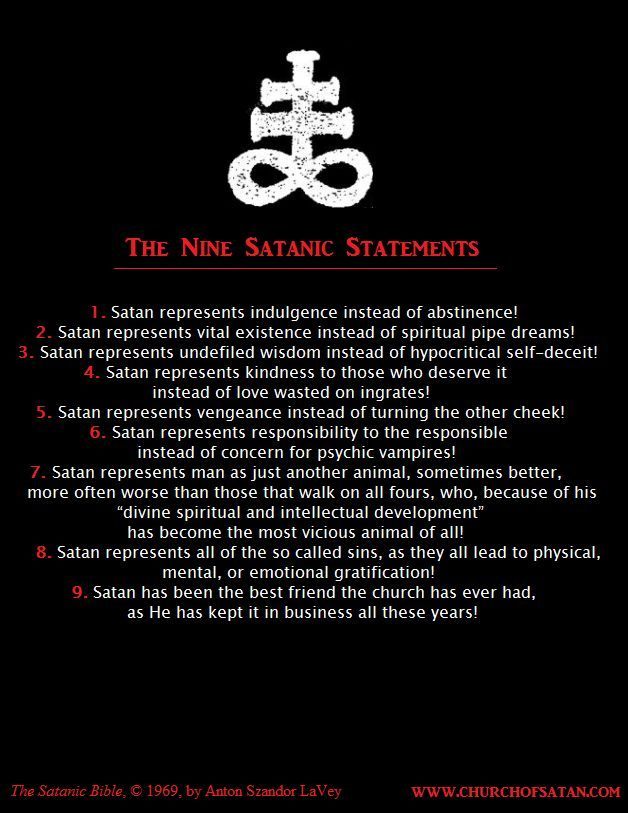
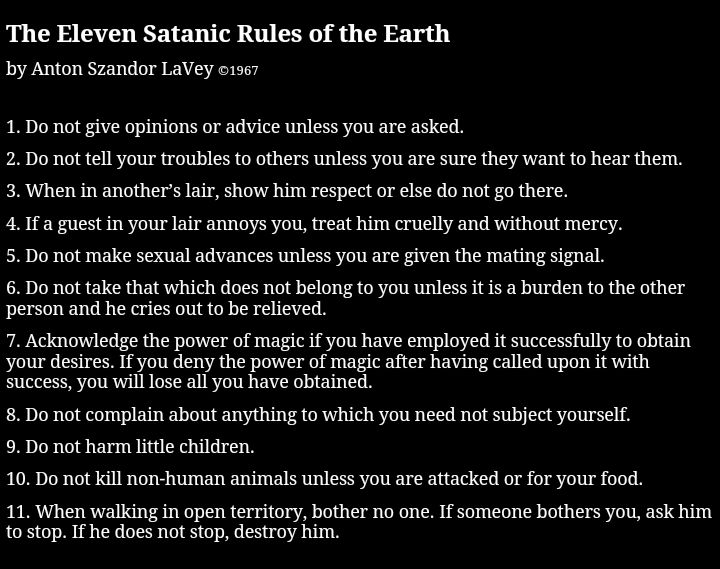

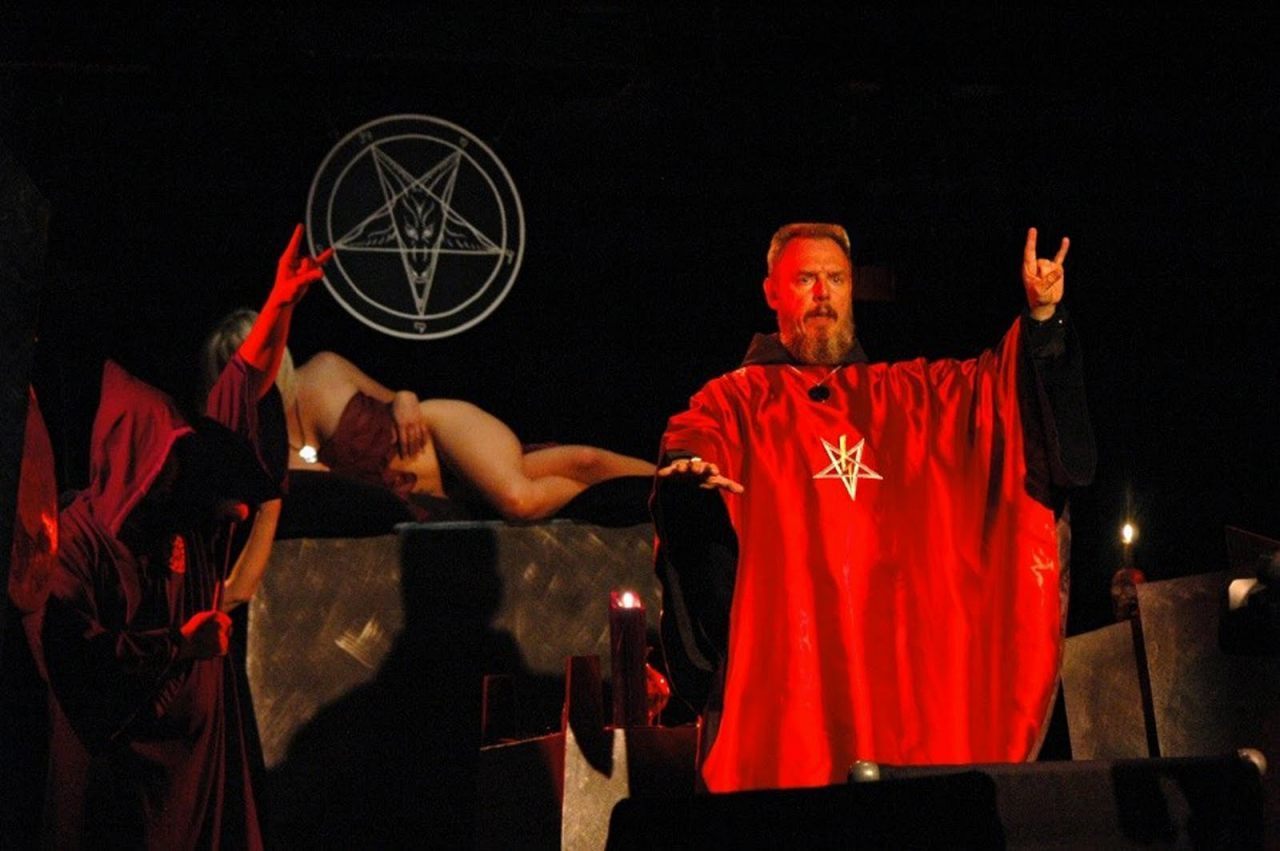
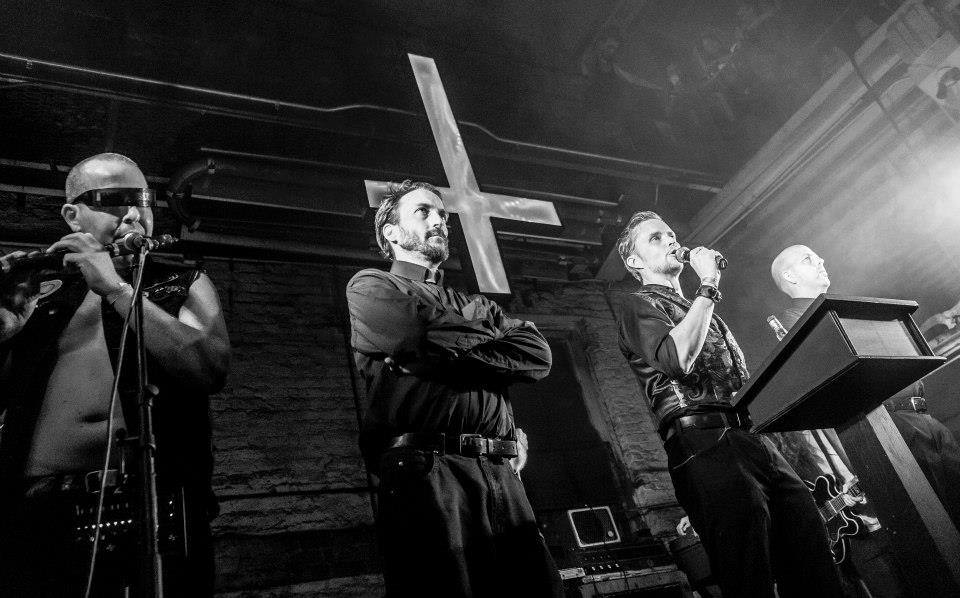
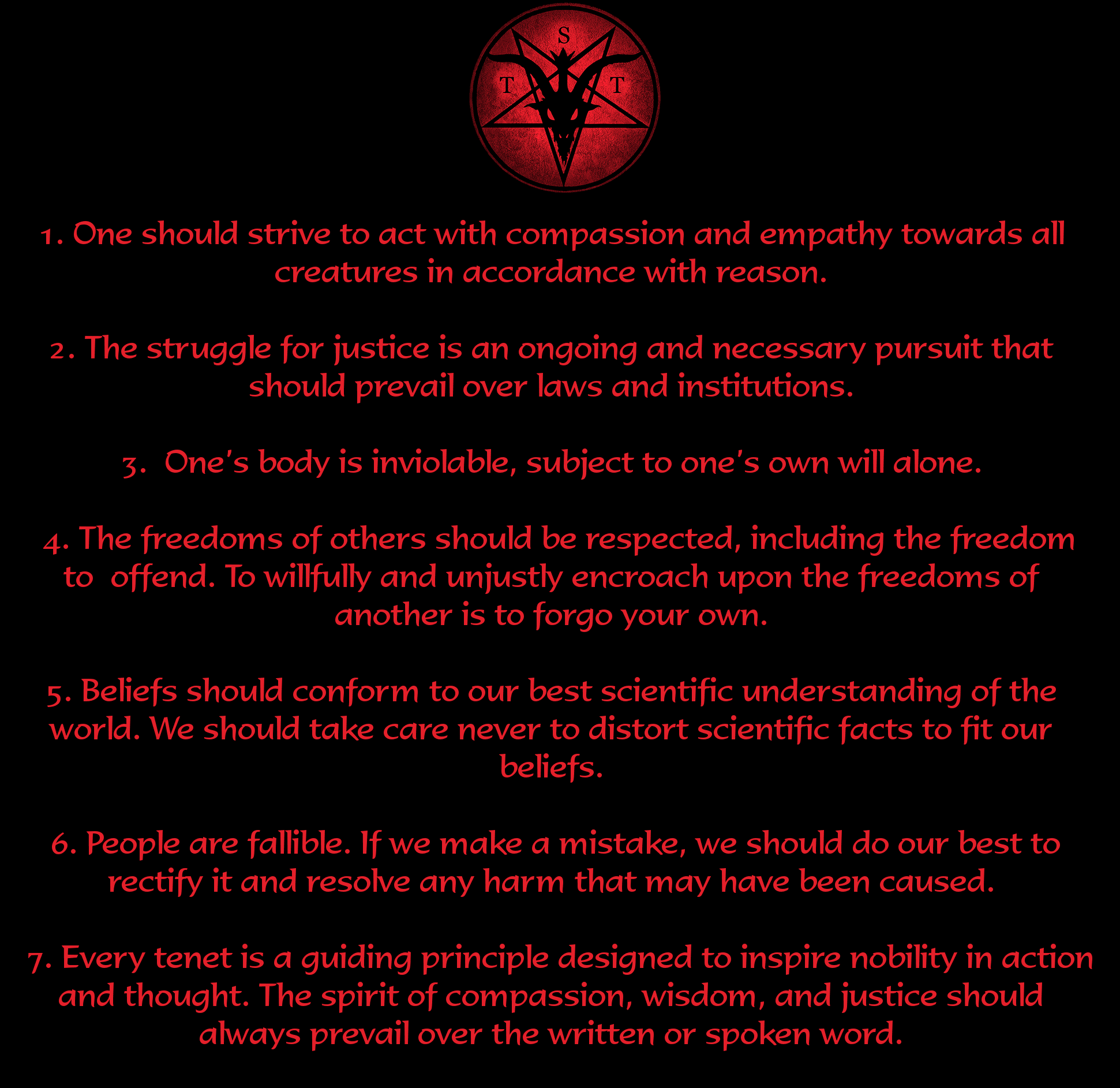

COMMENTS
Please let us know if you're having issues with commenting.